A Job Board Built a Generative AI-Powered Feature I wrote about a year ago
Last year, I gave a talk on the impact of ChatGPT on online recruiting at RecBuzz in Berlin. During the event, I presented a list of innovative features leveraging generative AI for job boards. I wrote extensively about one of these features in my book ChatGPT Undressed & Unadorned, published by TATECH last year.
Today, I was pleasantly surprised to discover that a leading German job board has implemented one of these ideas. This development validates the concept and signals a potential new trend of adopting new tech in our industry.
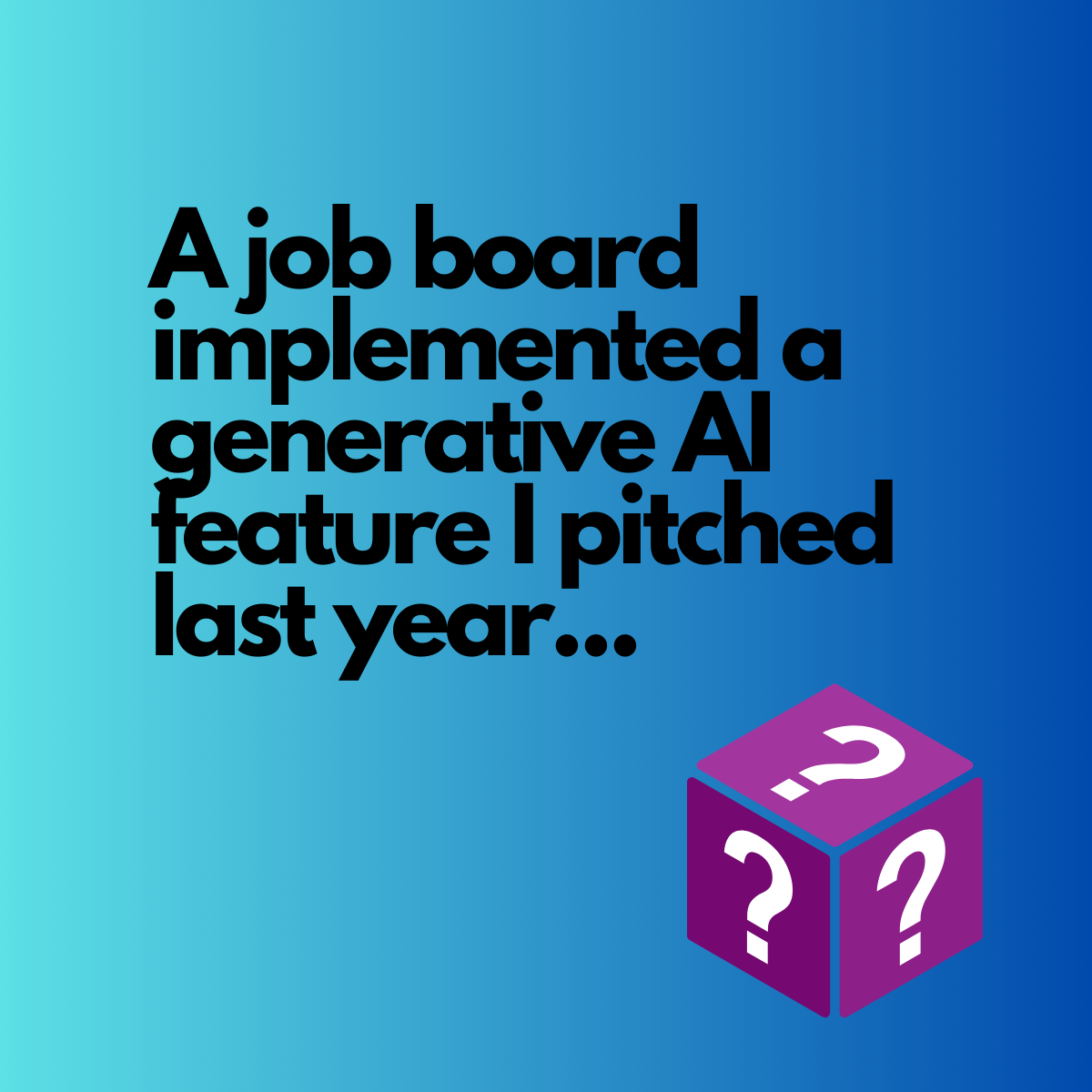
Background
What are the actual use cases for generative AI in job boards? This has been a hot topic since ChatGPT came out. In my presentation, I outlined several AI-driven features that job boards can build with the help of generative AI. One key concept was a natural language-powered job search, allowing users to input their preferences conversationally as if describing their ideal job to a friend or career counselor.
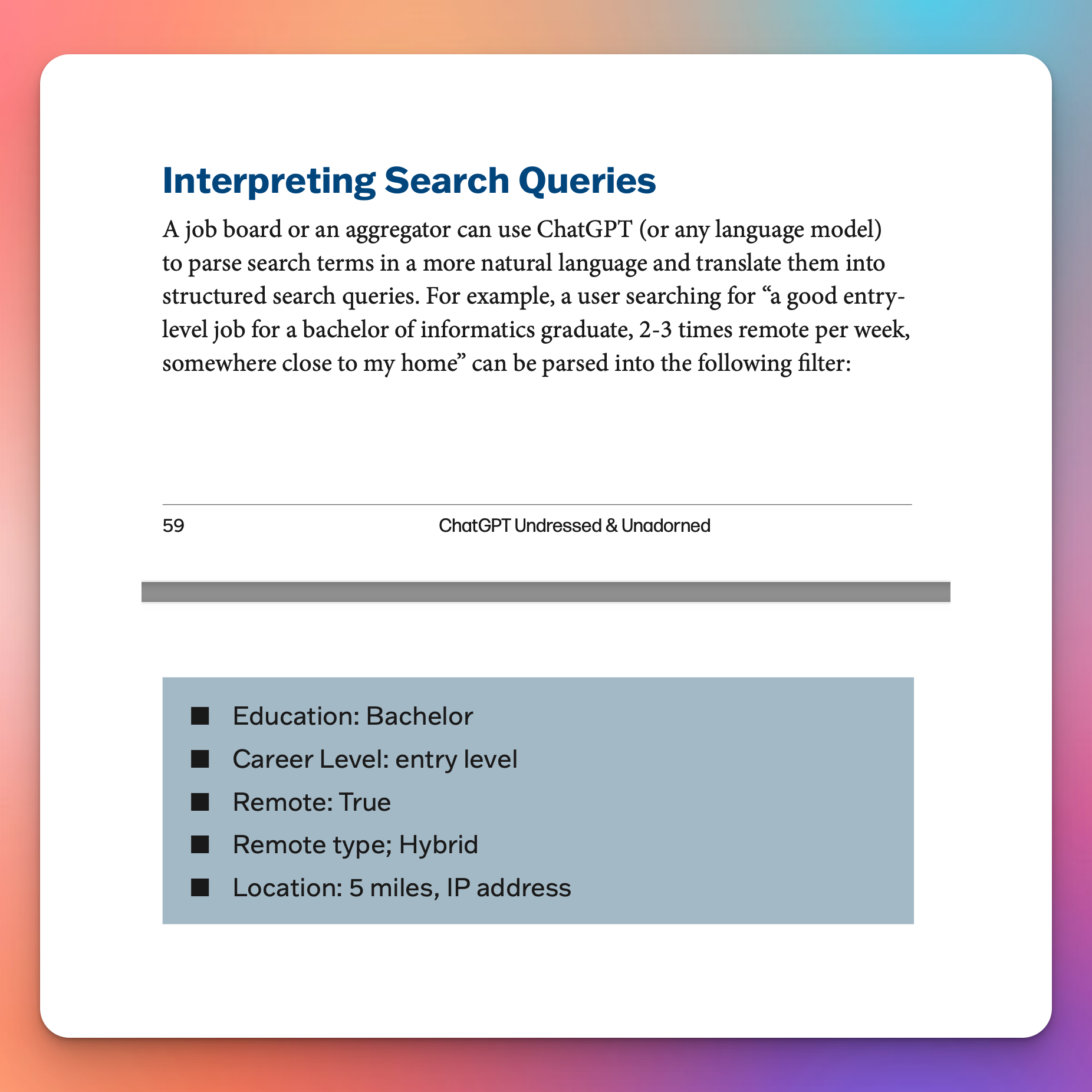
How does this feature work?
Generative AI, which uses enormous language models (LLMs), significantly advantages natural language processing. One is contextual understanding: Generative AI excels at understanding context and nuance in language. It can interpret complex queries like "I want a challenging tech role where I can make a difference without the Silicon Valley burnout culture" and extract meaningful search parameters from this subjective description.
At the same time, generative AI is also great at zero-shot classification tasks. Zero-shot classification is a machine learning technique where a model can categorize data into classes it has yet to be explicitly trained on by leveraging its understanding of language and concepts. It allows new, unseen categories to be classified without requiring additional training data for those specific classes.
So, for example, I can provide an LLM with the following text: "I want a job that does not require experience," and the model will classify this text as jobs without experience.
In this slide, I have outlined the example of how a feature like this would parse the text and generate input for the potential filters that a job board offers. In straightforward terms, we take the query and ask an LLM to break it down into pieces. Once that is done, we ask the LLM to map each extracted piece to one of our filters.
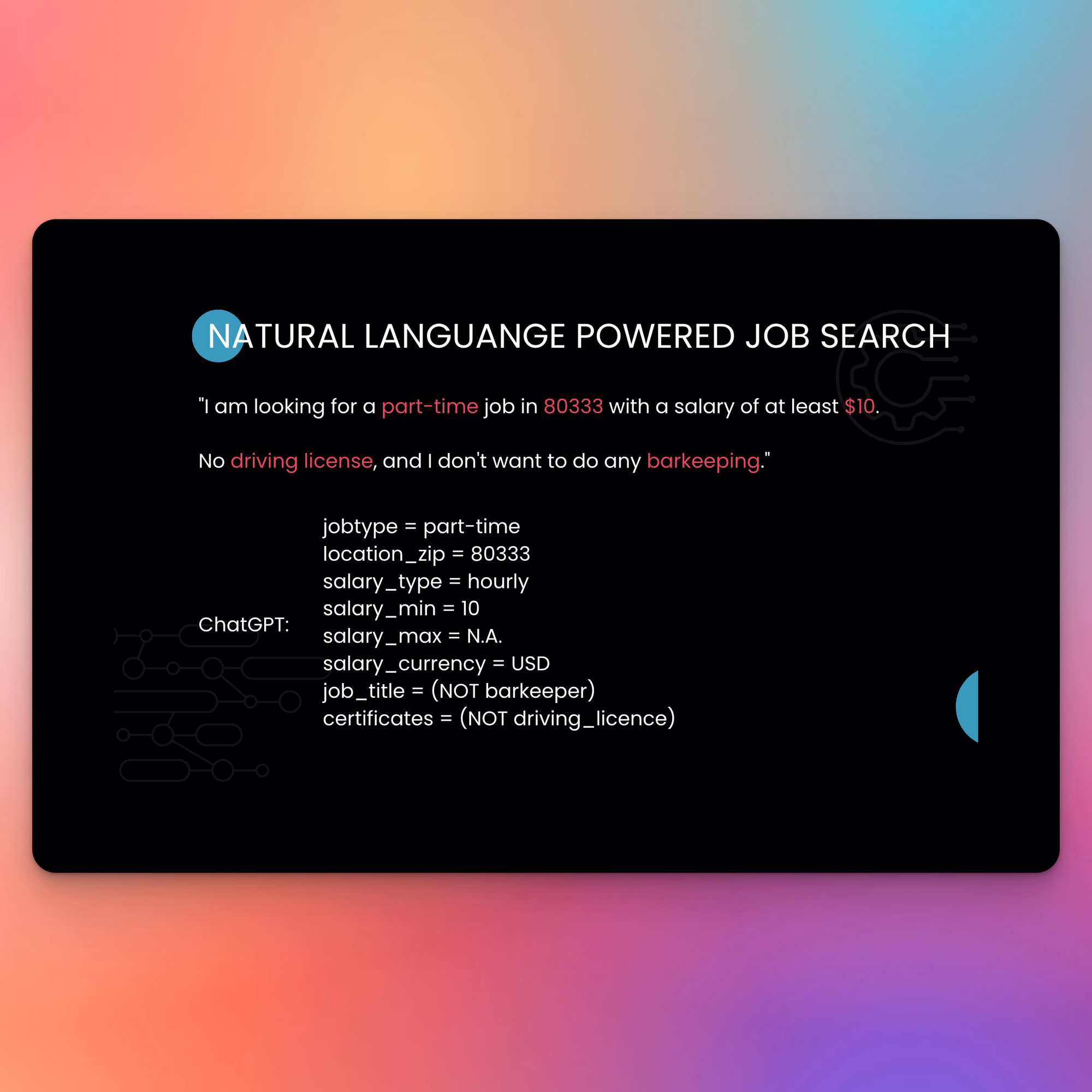
The Implemented Feature
Yesterday, XING shared that they have introduced an AI-enhanced job search feature that is currently in beta. This feature allows job seekers to input their search criteria using natural language. For example, a user can type "a job without driving, maximum 2-3 days in the office. I know JAVA and C++."
The system then interprets this input to understand the user's preferences, including remote work arrangements, office time, and specific skills. It's designed to provide a more intuitive and flexible way for job seekers to describe their ideal position, moving beyond traditional keyword-based searches.
Here is an example of a query and the results:
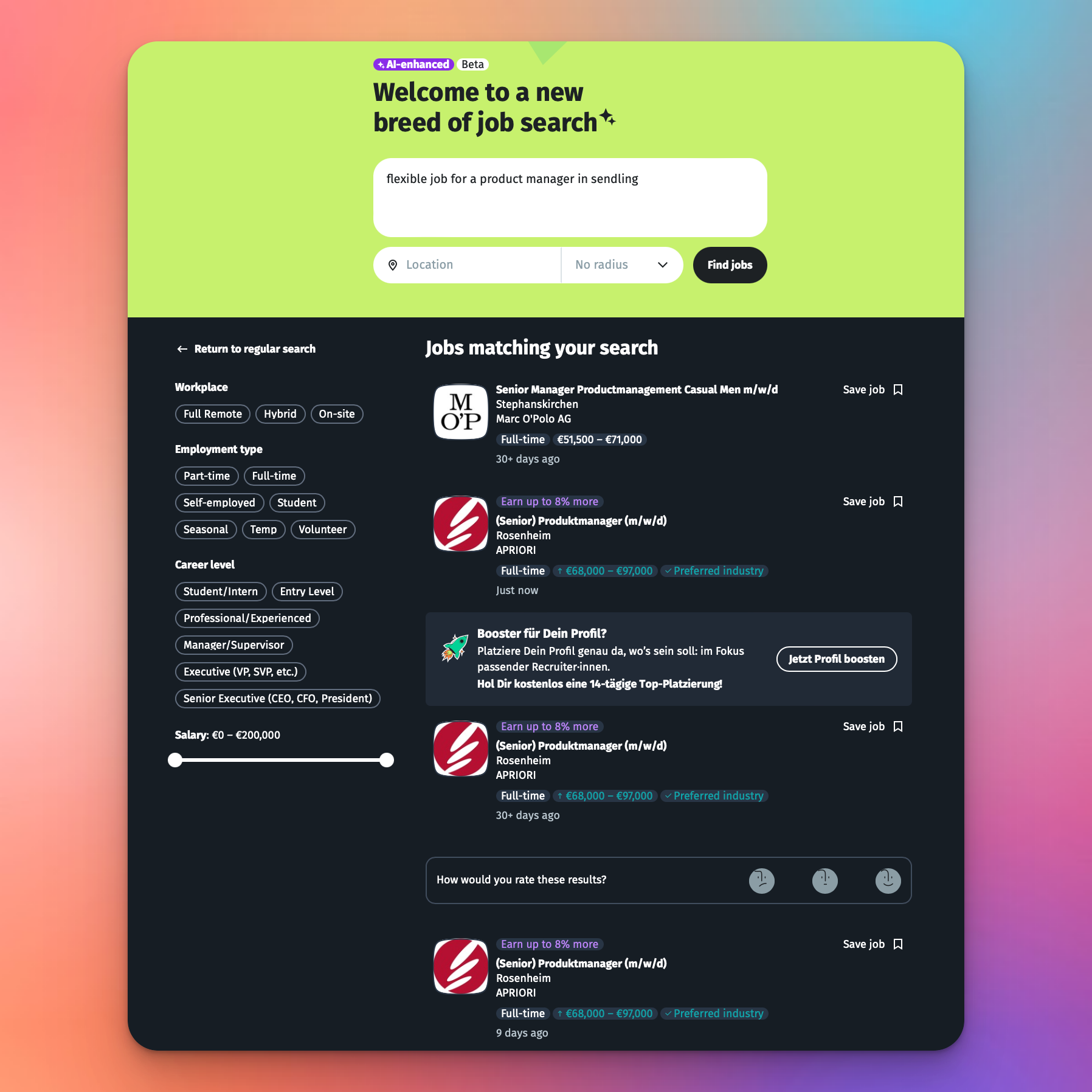
Analysis and Implementation
In the AI-powered search, Xing has the following filters: remote type, employment type, salary and career level.
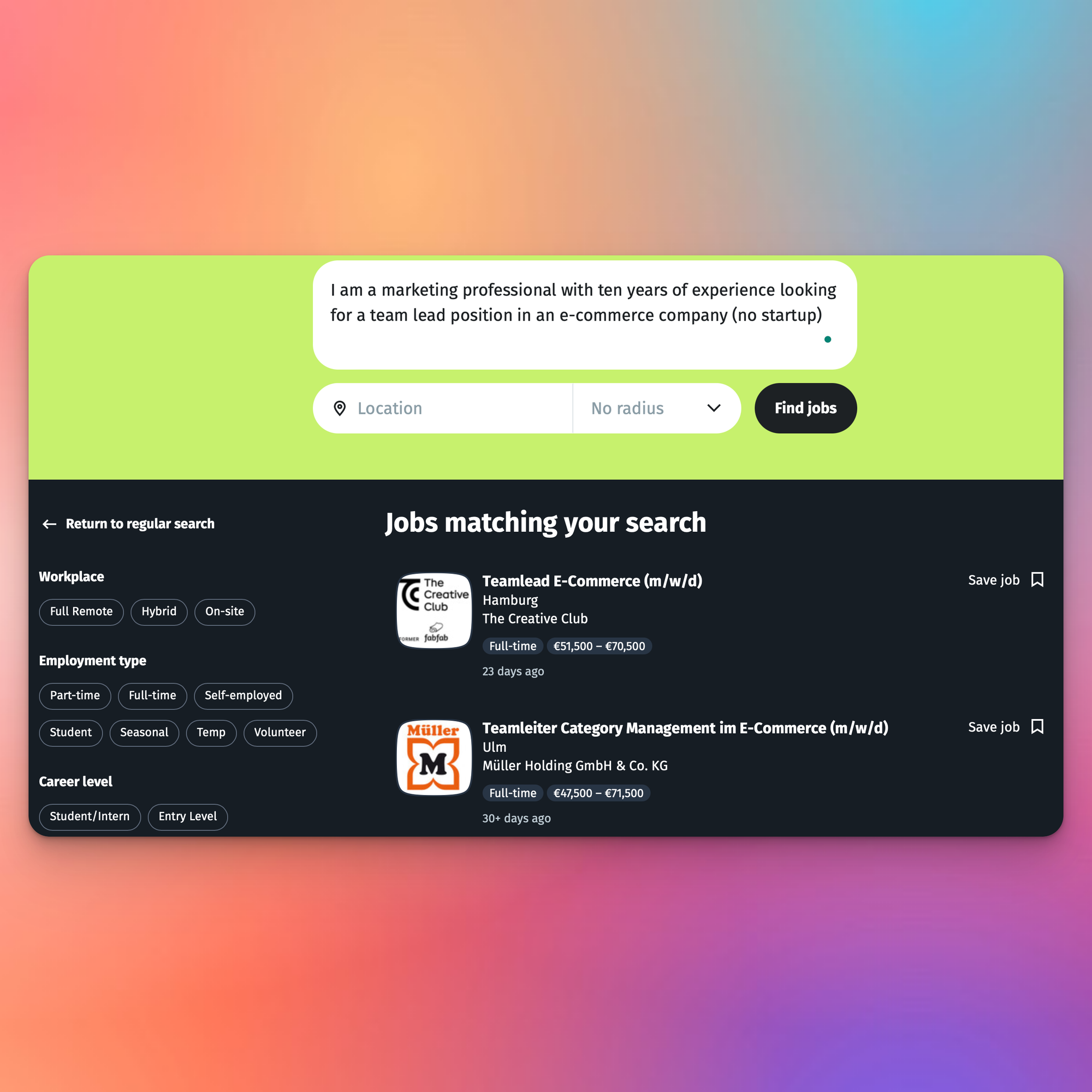
In the regular search, they also have benefits, culture, industry and job function.
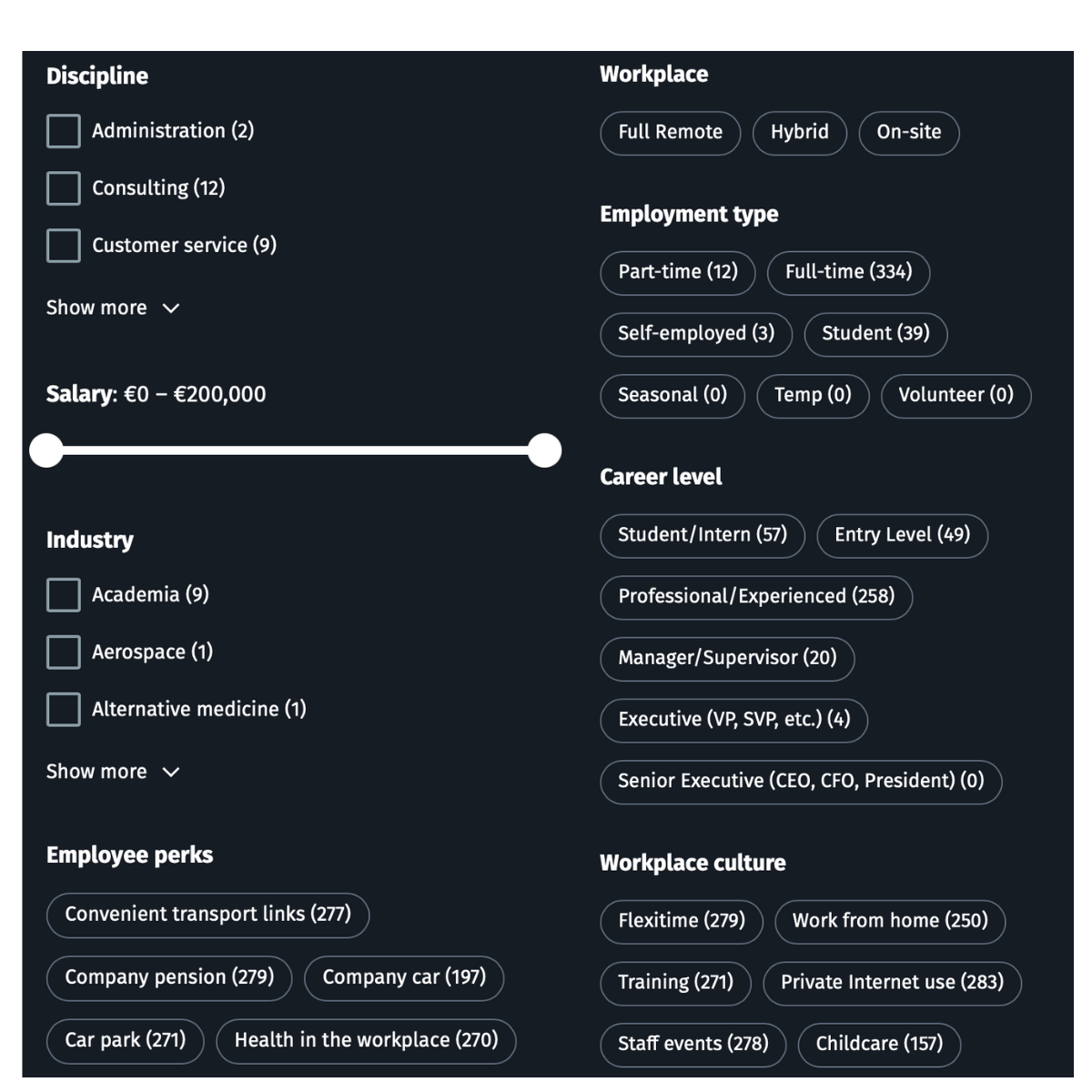
Based on this example, the AI-powered search resolves queries related to experience, job title, career level, employment type, and remote type. In the example above, I have a keyword related to the company's industry—e-commerce—but the search did not pick this up as an industry (Xing’s industry is “Internet and Online Media”). I have not been able to trigger these additional filters yet.
So, how does this implementation differ from my original concept?
Here are notable similarities:
- Both use natural language input for job searches
- AI powers the interpretation of user queries
- Complex criteria, including work arrangements, experience, skills, and remote settings, can be processed in a single query
However, XING's implementation differs in some aspects:
- There's a separate field for location preferences.
- The AI's interpretation process is not visible to the user
- The filters are not visually selected
I am not sure what to make out of it. The location can easily be part of the query, so there is little reason why it should be kept out. Pretty much any LLM can extract location data very well. Still, this is not a big issue. The problem is that the user does not see which filters are applied. In my concept, after the query is parsed, the job seekers immediately see which filters were recognized, and they are used to the search so that they can correct them.
Industry Implications
XING's implementation of this feature could catalyze change in the job board industry. Traditionally, job boards offer two search fields – one for the job title or the search query and one for the location. As job seekers experience the convenience and effectiveness of AI-powered searches, other platforms may feel pressured to offer similar capabilities. This could lead to a new standard in job search functionality, where conversational AI becomes the norm rather than the exception.
My Perspective on AI-powered Search
Seeing my idea come to life on a central platform like XING is exciting and validating. While the implementation differs slightly from my original concept, particularly in the user interface design, the core principle of using natural language processing to enhance job searches remains intact.
Just because something makes sense does not mean users will adopt it. People are used to searching the way they search today, and no one knows if they want to search with natural language queries.
This brings me to my next topic – KPIs.
KPIs:
To measure the success of XING's AI-powered natural language job search feature, we could consider several key performance indicators (KPIs). These metrics would help evaluate the feature's effectiveness, user adoption, and impact on the overall job search process. Here are some relevant KPIs:
User Engagement:
- Adoption rate: Percentage of users trying the new feature
- Usage frequency: How often users engage with the AI search compared to traditional search methods
- Time spent: Average duration users spend interacting with the feature
Search Quality:
- Click-through rate (CTR): Percentage of users clicking on job listings from AI-powered search results. This will be a proxy for the relevance score:
- Search refinement rate: How often do users modify their initial query
Job Application Metrics:
- Application rate: Number of applications submitted through AI-powered search results compared to traditional search
- Application quality: Feedback from employers on the relevance of applications received
- Time-to-application: Average time from search to submitted application
User Satisfaction:
- User feedback and ratings specific to the AI-powered search
- Retention rate: How many users return to use the feature again
This is just an essential list.
By tracking these KPIs, XING will gain valuable insights into the performance and impact of their AI-powered job search feature. This data would help refine the current implementation and guide future developments in AI-driven job search technologies.
Some of these metrics require establishing a baseline from traditional search methods for comparison.
Future Outlook Consideration
This development could begin a broader trend in AI adoption among job boards. We did see a few job boards pushing new features like a job description generator and AI-powered resume builder. Indeed also released its advanced generative AI-powered license/skill extraction technology and industry-specific classification. We may soon see more advanced features like AI-powered customer onboarding, advanced dynamic taxonomies, and embeddings-powered matching.
Conclusion
XING's implementation of AI-powered natural language job search could represent a significant step in making job searches more intuitive and effective. It's an exciting validation of the concepts I presented and is a good indicator of the direction our industry is heading.
I'm eager to hear your thoughts on this development. Have you used XING's new feature or similar AI-powered job search tools? How will this impact the job search process in the coming years?
Are you considering building a natural-language-powered job search? Reach out if you need help!